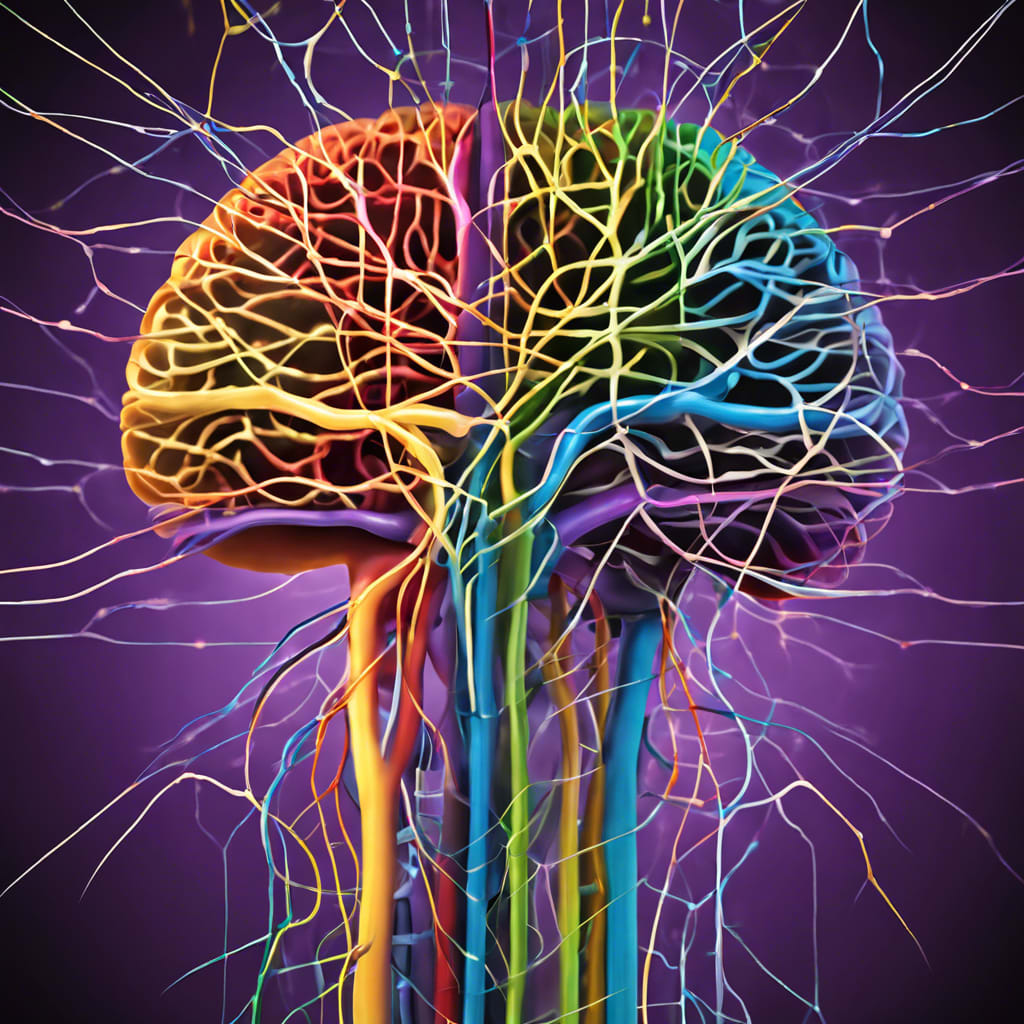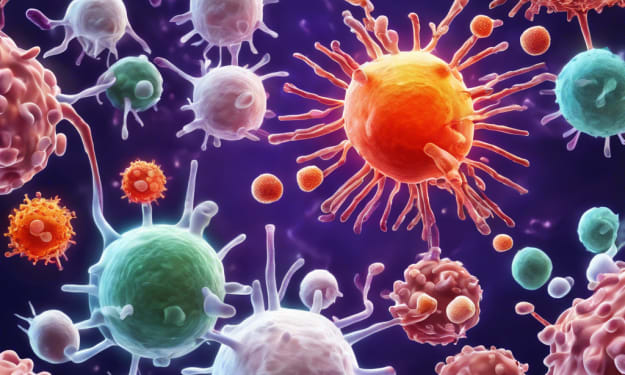The Body's Silent Guardians: Unveiling the Marvelous Machinery of the Human Nervous System
From Sensory Input to Action: How We Perceive and Respond to the World

The Body's Silent Guardians: Unveiling the Marvelous Machinery of the Human Nervous System
Our bodies are marvels of intricate systems working in harmony. Among these, the nervous system stands out as the silent conductor, orchestrating our interactions with the world around us. It's a complex network of specialized cells that gathers information, processes it, and triggers responses that allow us to move, feel, and experience life.
The Master Control Center: The Brain
The brain serves as the central command center of the nervous system. Billions of interconnected nerve cells (neurons) form a vast communication network responsible for our thoughts, emotions, and actions. While our genes provide a blueprint for the brain's general structure, our experiences significantly shape how we interpret and respond to the information it receives.
A Symphony of Information Processing
The brain receives a constant stream of sensory information from various sources:
- Sensory Organs: Specialized organs like our eyes, ears, nose, tongue, and skin gather information about sight, sound, smell, taste, and touch.
- The Body Within: Internal sensors monitor factors like blood pressure, blood sugar levels, and muscle movement, providing feedback on the body's internal state.
These sensory details are relayed by specialized cells called neurons through electrical impulses and chemical messengers. Other supporting cells, called glia, work tirelessly to maintain the health and function of these vital neurons.
The Messengers: The Spinal Cord and Nervous System Branches
The journey of information doesn't end at the brain. The spinal cord, a vital extension of the brain, acts as a relay station. Sensory information from various parts of the body travels through the spinal cord to reach the brain for processing.
The nervous system further branches out into two distinct networks:
- Peripheral Nervous System: This extensive network acts as a communication bridge between the brain and spinal cord to all other parts of the body.
- Autonomic Nervous System: This intricate system operates largely outside of conscious control, regulating essential functions like heart rate, digestion, and respiration. It ensures our bodies function seamlessly even when we're not actively thinking about them.
From Input to Action: How the Brain Responds
Once the brain receives and processes sensory information, it triggers a response through the nervous system. These responses can be:
- Reflexive: Simple, automatic reactions like the knee jerk reflex occur without conscious thought. A sensory neuron detects a stimulus, triggering a motor neuron to activate the muscle for a rapid response.
- Calculated: The brain may analyze incoming information based on internal state and past experiences before generating a response. For example, the sight of a delicious dessert might trigger the urge to eat, but the feeling of fullness might lead us to resist that temptation.
Experience Shapes Our Responses
Our experiences throughout life play a crucial role in shaping how our nervous system interprets and reacts to the world. Memories of past experiences influence how we perceive and respond to similar situations in the future.
On the Cutting Edge: Recent Discoveries in Neuroscience
The field of neuroscience is constantly evolving, offering exciting new insights into the complexities of the brain. Here are two groundbreaking areas transforming our understanding of the nervous system:
- Brain-Computer Interfaces (BCIs): These devices bridge the gap between the brain and external technology, allowing users to control computers, prosthetic limbs, or even virtual reality environments with their thoughts. BCIs hold immense promise for individuals with paralysis or other neurological conditions, potentially restoring lost motor function or communication abilities. For example, a recent study at Stanford University demonstrated successful use of a BCI to allow a paralyzed individual to control a robotic arm and even feed themselves.
- The Microbiome-Gut-Brain Connection: Research suggests a fascinating link between the trillions of bacteria residing in our gut (the gut microbiome) and brain function. A healthy gut microbiome may play a role in promoting cognitive function, mood regulation, and overall mental well-being. Conversely, an imbalanced gut microbiome has been linked to an increased risk of anxiety, depression, and even neurodegenerative diseases. Scientists are exploring how manipulating the gut microbiome through prebiotics (foods that promote the growth of beneficial gut bacteria) or probiotics (live bacteria supplements) might offer new avenues for treating neurological disorders.
The Future of Neuroscience: A World of Possibilities
The future of neuroscience is brimming with possibilities that can revolutionize healthcare and our understanding of the human mind. Here's a glimpse into what lies ahead:
- Personalized Medicine: Advancements in brain imaging and genetic testing may pave the way for personalized treatment plans for neurological disorders. By understanding an individual's unique brain profile, doctors can tailor therapies to maximize effectiveness and minimize side effects. Imagine a future where early detection and targeted interventions become the norm for conditions like Alzheimer's disease or Parkinson's disease, potentially delaying or even preventing their progression.
- Neuroprosthetics: The field of neuroprosthetics is making significant strides in developing artificial limbs and other devices that can seamlessly integrate with the nervous system. These advancements can restore lost function and improve the quality of life for individuals with disabilities. For instance, recent breakthroughs in bionic arms controlled by brain signals are allowing amputees to regain remarkable dexterity and control over their prosthetic limbs.
The human nervous system is a marvel of evolution, a complex and awe-inspiring network that governs every aspect of our being. By delving deeper into its workings, we unlock the potential to not only treat neurological disorders but also enhance human capabilities and our understanding of the mind-body connection. The future of neuroscience is bright, promising a world where the silent guardians within us hold the key to unlocking a new era of human flourishing.
About the Creator
suren arju
Hi there! I'm Suren, your startup guide. Entrepreneur, writer, dreamer - I share insights, tips & stories to fuel your startup journey. Ready to explore, learn & win together? Join me & let's redefine how we launch, learn & leap!
Enjoyed the story? Support the Creator.
Subscribe for free to receive all their stories in your feed. You could also pledge your support or give them a one-off tip, letting them know you appreciate their work.





Comments
There are no comments for this story
Be the first to respond and start the conversation.